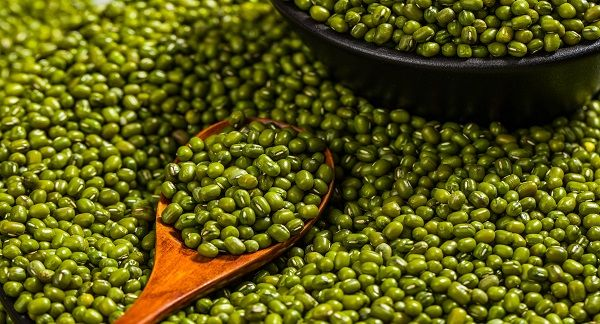The China-EU Agreement on Geographical Indications officially entered into force on March 1, 2021. It is China's first bilateral comprehensive and high-level agreement on the protection of geographical indications (GIs), and an important and practical outcome in the development of China-EU economic and trade relations in recent years.
We will continue to introduce to you the first batch of 100 Chinese GIs and 100 European GIs under the Agreement, to better protect and market them to meet the needs of consumers on both sides for a better life.
GI Episode 34: Baicheng Mung Bean
Mung beans have been cultivated in China for more than 2,000 years. Li Shizhen, a Chinese medical expert of the Ming Dynasty, spoke highly of mung beans because of their high nutritional value and versatility. Mung beans are produced in many places in China. Baicheng City of Jilin Province is considered the most famous area for mung bean production in terms of quality and quantity of production.

Baicheng is China's main area for mung bean production and a major contributor to China’s mung bean exports. It has a long history of cultivating mung beans and is known as the “City of Mung Beans”. Mung beans are part of everyday life of local people. For hundreds of years, almost every household in Baicheng grows mung beans. Mung bean sprouts, mung bean porridge, and mung bean cakes are common dishes you can find at a table of local people.

Located in the northwestern part of Jilin Province, Baicheng City is a semi-arid agro-ecological zone with four distinct seasons, rain and heat at the same period, abundant precipitation, and sufficient light resources. The unique natural conditions are very suitable for the growth of mung beans. According to local climate and geographical environment, Baicheng Mung Bean series of excellent varieties have the characteristics of big and full grains, bright color, bright green, no pollution, high protein content, good starch quality and high sand yield. Baicheng mung bean is drought-resistant, barren-tolerant, high-quality and stable-yield, and has wide adaptability and high yield potential in the local area, forming the unique quality of Baicheng mung bean.

Seventy percent of the high-quality mung beans produced in Baicheng are used to produce mung bean sprouts, mung bean glass noodles, mung bean jelly, mung bean cakes, mung bean paste and other traditional foods. In recent years, Baicheng has adopted a diversification strategy and developed new mung bean products such as mung bean rice, mung bean starch, mung bean wine, and mung bean beverage. Baicheng has built a distribution center for the export of mung bean commodities and China’s largest wholesale grain (mainly mung beans) market. Over the years, Baicheng mung beans have built and maintained a reputation for being high-quality and thereby are in a better position over competing products in both domestic and foreign markets.

Since China adopted the reform and opening-up policy, especially after 1989, the International Fund for Agricultural Development has been providing support for the Baicheng Low-lying Area Development Project on Baicheng Mung Beans. Baicheng attaches great importance to the development of the mung bean industry. It seeks to harness the power of science and technology, promote intensive operations, and develop high-quality and high-yielding Baicheng mung beans. Baicheng will continue to support the production of mung beans with its unique strengths and build an intensively managed mung bean industry.

